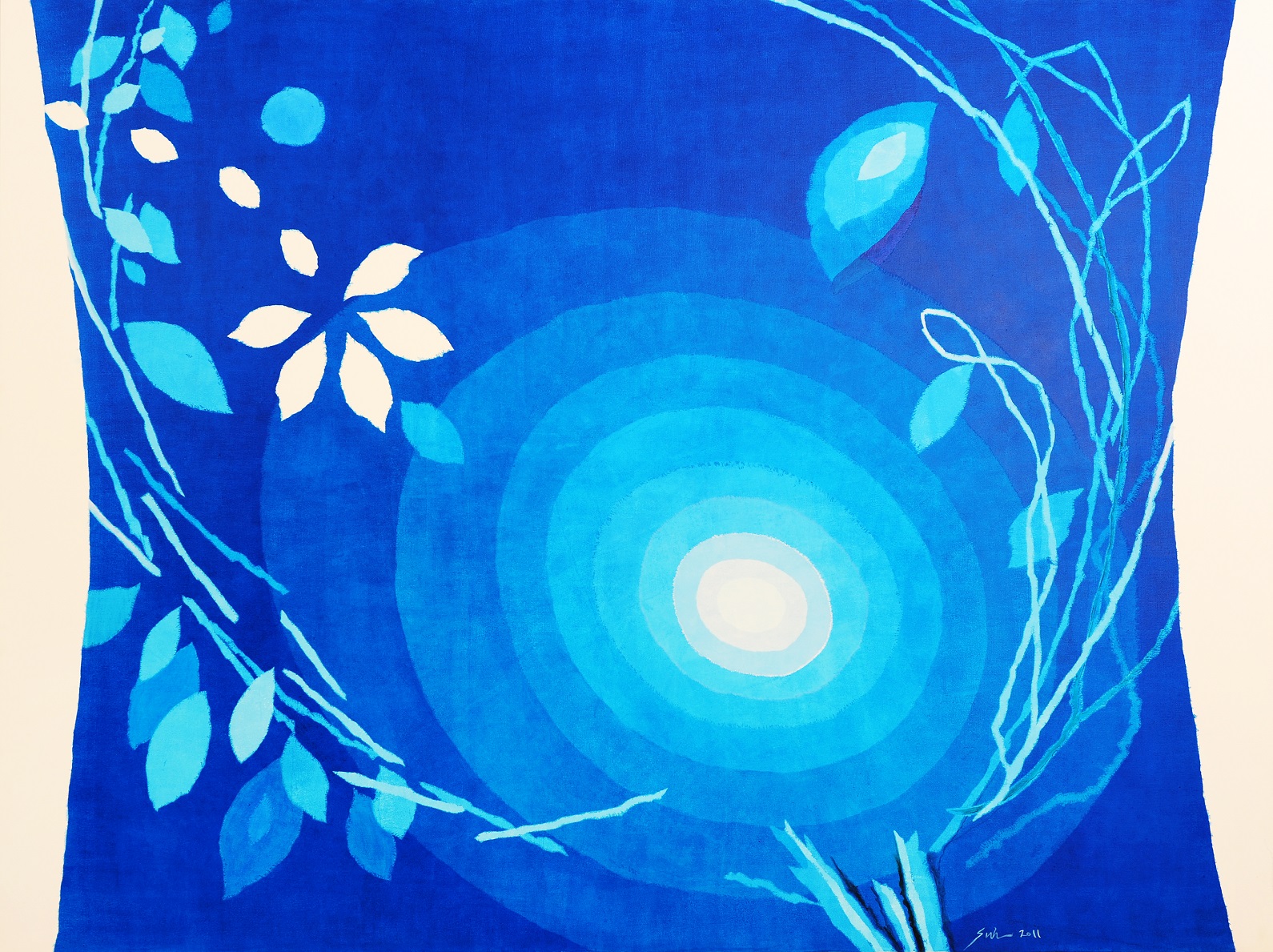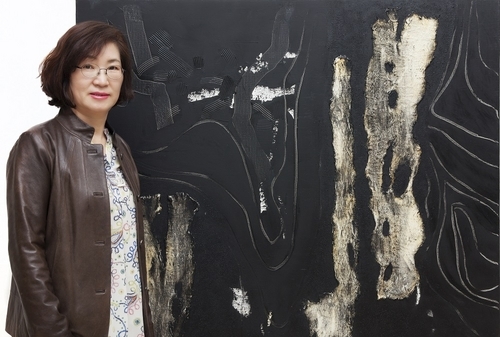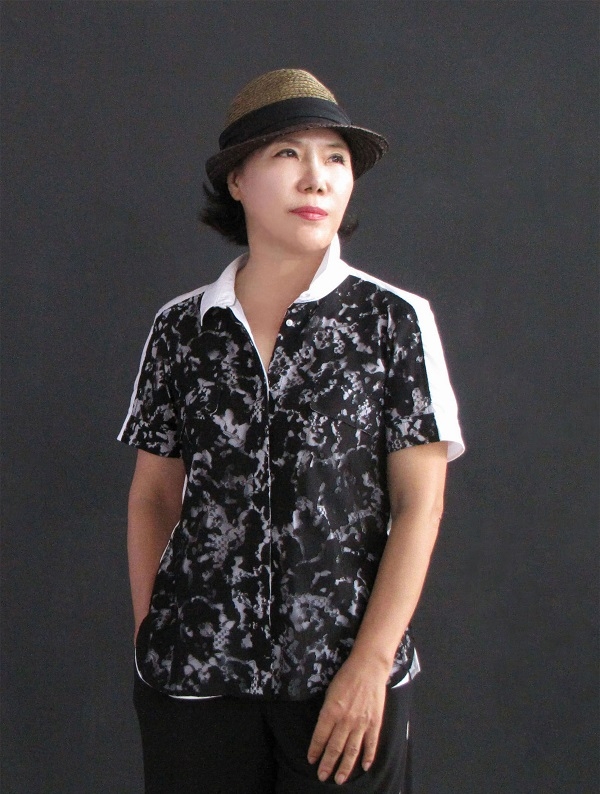[권동철의 화가탐방]‘involuntary memory’ and ‘To Find Lost Time’,‘비의도적 기억’과 ‘잃어버린 시간을 찾아서’[Jo Hyang Sook,임영길 평론③,화가 조향숙,조향숙 작가,Yim Young Kil]
 |
도판(fig)04ㅡ조향숙-24 –To Find Lost Time-Happy memories, 아름다운 인연(因緣)3, 66×90㎝, gold leaf on wood cut, 2020. 사진제공=임영길. |
‘involuntary memory’ and ‘To Find Lost Time’
Art historian Ernst Chris said, “All powerful images are inherently vague because they are created from the experiences and conflicts that the painter experiences in life.” Texts and images exist inside the human body. Among the things we see, read, and listen to every day, things related to our desires or mental trauma get scattered, piled and curled up in the nervous system of our brain and body, and finally wriggles when triggered by something.
In Jo Hyang Sook's doctoral dissertation submitted in 2012, she analyzed the meanings contained in her series of work, <To Find Lost Time>(2011), and revealed the characteristics of its expression by using the terms ‘involuntary memory’ and ‘contemporaneity’, which are the important subjects in Henri Bergson's 『Matter and Memory』 and Marcel Proust's 『In Search of Lost Time』.
“Time according to Bergson is not sequential but subjective, where the past and present are contemporaneous and meet dormant memories through the stream of consciousness by ‘involuntary memory.’ The ‘involuntary memory’ that is applied by Proust in 『In Search of Lost Time』 reveals influence on the present life as by chance it meets with something connected to a time in the past. As involuntary memory is summoned to the present and is applied as contemporaneous with the present, the researcher has expressed how involuntary memory is exposed through the works in this study. Through ‘involuntary memory’ among usual past memories, in particular ‘pure memory’ as it meets with the present becomes a symbolic image, and transcends sequential time and physical space, appearing contemporaneously with the present.”
Not only Proust, but also Hermann Hesse wrote in <Magister Ludi>, “Early Spring always reminded me of the scent of elm and Schubert's melody. Along with the melody, I always recall the smell of a bitter elm tree, and these two associations merge into spring” explaining a certain process of association that is accidentally triggered awakens the images that lie deep inside the artist's body, edit them, organize them, as a response to the trigger. If memory about maintaining self-identity, the identity of a human being may be a matter of which memory to erase and which memory to store. This is because remembering selectively what we learn and experience is a way of understanding the world in different language.
Jo Hyang Sook believes that by visualizing these memories, she can find her identity. Unless humans live alone, it is inevitable that they are stressed out in relationships with others whose experiences and ways of thinking cannot be the same. Post-traumatic stress disorder, an occasional and unbearably intense stress, exists deep in humans. This trauma is clearly applied to art and remains its trace, eventually leaving remnants, by-products and surpluses. Printmaking is a media in which the traces and processes of time are very important. Through traumatic thinking, the subject finds its reason for existence, and there is the need for printmaking in this era from artistic representation of this trace of existence. This is because for the artist, trauma is the driving force of art. Human beings can reach the feeling of happiness only when they relieve this stress or trauma.(fig. 04)
 |
도판(fig)왼쪽부터 05.1, 05.2ㅡ조향숙-18,19, To Find Lost Time-Happy memories, 아름다운 인연1,2, 60×90㎝, gold leaf on wood cut, 2020. 사진제공=임영길. |
Happiness is paired with unhappiness, and what makes a happy image exist in a memory of unhappiness as big as a piece of wood that has been carved out. In this way, happiness and unhappiness are combined to become an image of fluid inclusion.(fig. 05.1, 05.2)
 |
도판(fig)06ㅡ조향숙-13 To Find Lost Time-Happy memories, 행운과 행복(幸運과幸福), 40×60㎝, gold leaf on wood cut, 2020. 사진제공=임영길.
Wouldn't it be possible to reach true happiness only when we can understand and resolve our deficiencies and traumas inside ourselves by reflecting what's inside us that cannot be represented with language into images? Just as a river embraces others and flows into a vast ocean, happiness embraces one's misfortunes, and such embrace would extend to the others.(fig. 06)
 |
도판(fig)왼쪽부터 07.1, 07.2ㅡ조향숙-25,26,To Find Lost Time-Happy memories,미완의 기억(未完의記憶)1,2, 66×90㎝, gold leaf on wood cut, 2020. 사진제공=임영길.
This is like eros as a creation that realizes the desire of happiness through emptying.(fig. 07.1, 07.2)
▲글·도판제공=임영길 홍익대학교 미술대학 판화과 교수, 2020.12.
Writing and fig=Yim Young Kil, professor of printmaking College of Fine Arts Hongik University, 2020.12.
▲[한글평론 원제목]우리 전통의 정신과 형식에서 지속된 “잃어버린 시간을 찾아서-행복한 기억들”연작–조향숙의 목판화에 대한 단상(斷想)들-
[English criticism title]The Series “To Find Lost Time-Happy memories”, Continued in the Spirit and the Form of Korean Tradition–Thoughts on the woodcut of Jo Hyang Sook-
▲자료출처= Jo Hyang Sook, To Find Lost Time-Happy memories(잃어버린 시간을 찾아서-행복한 기억), 2020. 12.2~7. 선 아트센터(SUN ART CENTER)개인전 도록에 수록.



댓글
댓글 쓰기